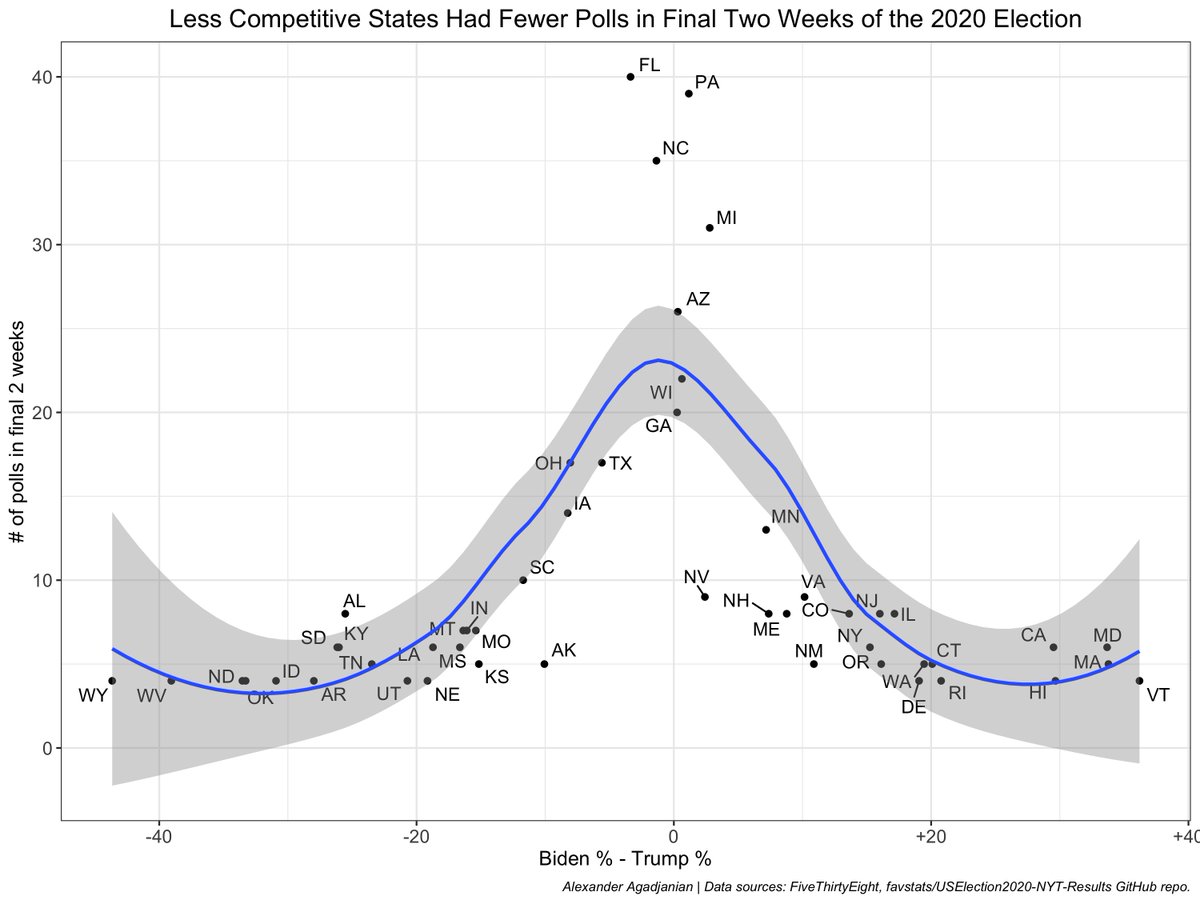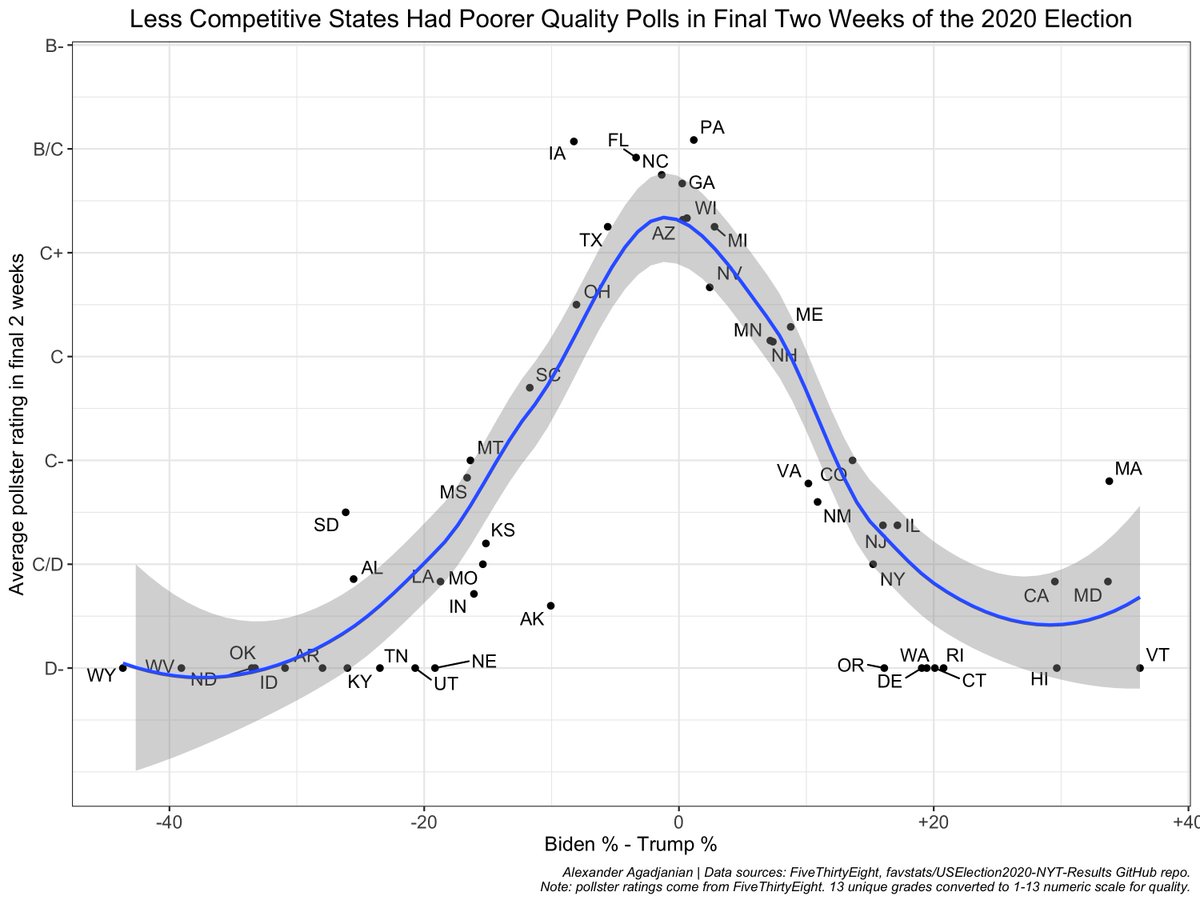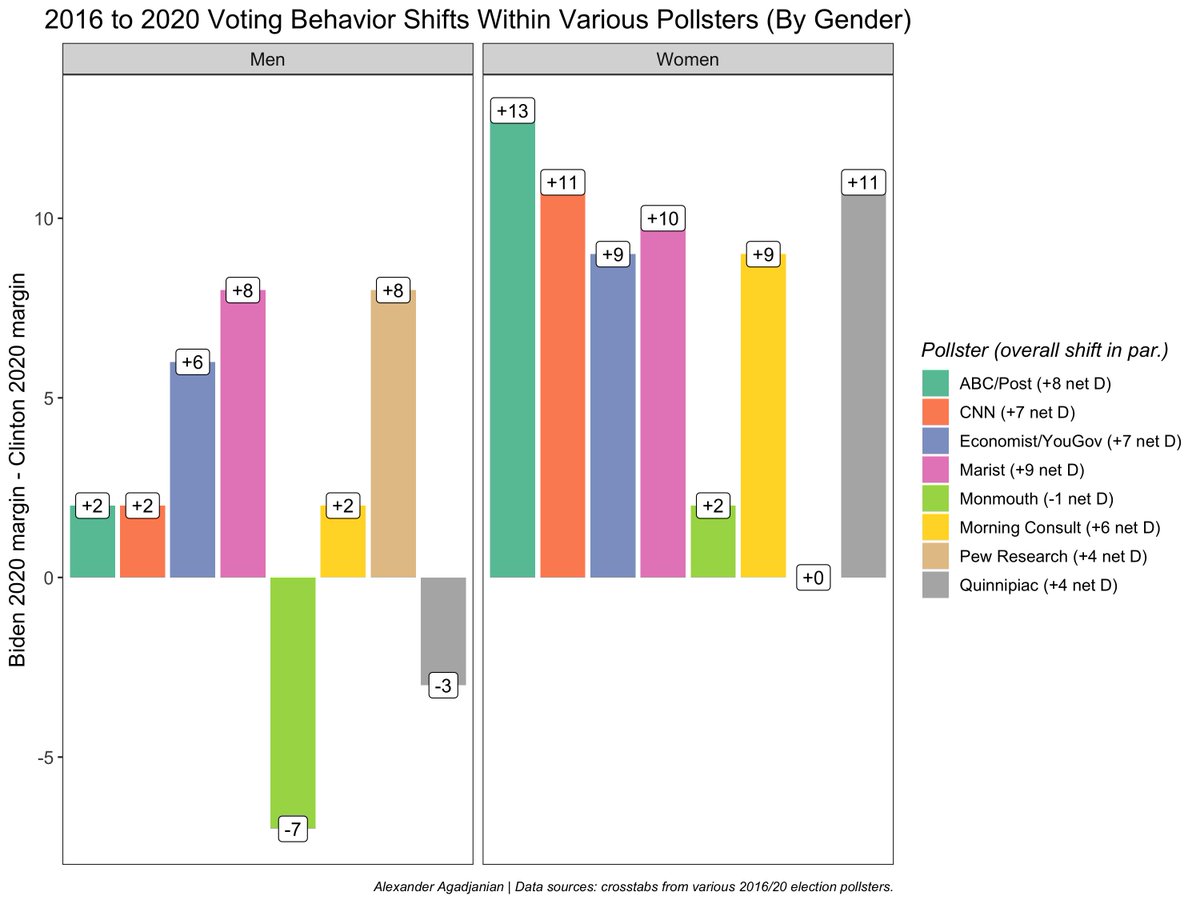
political science PhD candidate @UCBerkeley | race, identity, political psych + behavior | past: @MIT, @dartmouth ‘18 | 🇦🇲🇸🇻
How to get URL link on X (Twitter) App


https://twitter.com/shirokuriwaki/status/1379458246998700034Race x gender among all voters:

https://twitter.com/RobbWiller/status/1380244139707535360Time series polling data on other COVID-related behaviors similarly points to the power of elite cues:
https://twitter.com/A_agadjanian/status/1289073840497156097.
https://twitter.com/pewresearch/status/1361068201606537218In an experiment, compared to traditional single q on male/female, 2-step q (sex assigned at birth + current gender identity) better captured nonbinary respondents and did not affect 1) question nonresponse, 2) survey breakoff, or 3) views toward the surveyor (i.e. Pew).


 These graphs show that both volume and quality of polls in final 2 weeks is greatest in most competitive states and that it declines as a state gets more red/blue.
These graphs show that both volume and quality of polls in final 2 weeks is greatest in most competitive states and that it declines as a state gets more red/blue.


 Correlation between two-party Democratic president vote shares among pure Independents (from ANES surveys) and among all Americans (election returns) is 0.87.
Correlation between two-party Democratic president vote shares among pure Independents (from ANES surveys) and among all Americans (election returns) is 0.87. 

